
Machining is an essential part of high-performance engine building and stock rebuilding, as well as certain servicing procedures. Although you may not own the expensive tooling and machining to perform all or any of the machining required for a quality build, you need to understand the principles, procedures, and goals for machining, so you can guide the machining process when outsourced. Classic and older engines typically require extensive machining and almost every major component of engine, including block, heads, intake, crankshaft, and pistons, require some sort of machining and fitment.
A detailed, authoritative, and thorough automotive engine-machining guide for the hard-core enthusiast has not been available until now. Mike Mavrigian, editor of Engine Building Professional, walks you through each important machining procedure. A stock 300-hp engine build has far different requirements than a 1,000-hp drag race engine, and Mavrigian reveals the different machining procedures and plans according to application and engine design. The author also shows you how to inspect, measure, and evaluate components so you can provide astute guidance and make the best machine work choices. Machining procedures included are cylinder boring, align boring/honing, decking, valve seat cutting, cam tunnel boring, and a multitude of other services. In addition, multi-angle valve jobs, setting the valve seats, altering rocker arm ratio, re-conditioning connecting rods, and machining and matching valve train components are also covered.
Whether you’re an enthusiast engine builder or prospective machining student who wants to pursue a career as an automotive machinist, this book will provide insight and in-depth instruction for performing the most common and important machining procedures.

They say nobody walks in LA, but with LA Scavenger in hand you’ll ditch the car and discover Los Angeles’s hidden treasures that you’d otherwise zip past. This fun and interactive scavenger hunt will help you see the city in a completely new way as you walk or roll to locate under-the-radar and iconic landmarks. Set off on an exciting journey to uncover over 300 locations in neighborhoods all over LA and neighboring cities. You’ll use photos and rhyming clues to find eclectic public art, unique architecture, iconic restaurants, and other often-overlooked sights. Explore secret gardens, hidden staircases, and historic cemeteries where LA’s famous and forgotten names are buried. Find a charming shop that’s been making mochi for over 100 years and a Jewish deli full of rock history and pastrami. You’ll also visit a storied hotel that hosted the first Academy Awards ceremony, a Victorian mansion that became a clubhouse for magicians, and an Art Deco sculpture that guards a lake. Even if you’re familiar with some of the locations, the poetic clues will reveal fascinating trivia and give you a fresh perspective on the neighborhood. Food and travel writer Danny Jensen brings his love for Los Angeles and enthusiasm for exploring hidden histories and secret places to this unique guidebook. With this one-of-a-kind scavenger hunt, you can team up with your family, challenge your friends, or solve the clues on your own to test your knowledge of the city. Perfect for both visitors and longtime Angelenos, LA Scavenger will help you explore new neighborhoods, look at familiar locations in new ways, and train your eye to find the tiny details that tell a larger story. Enjoy the adventure!
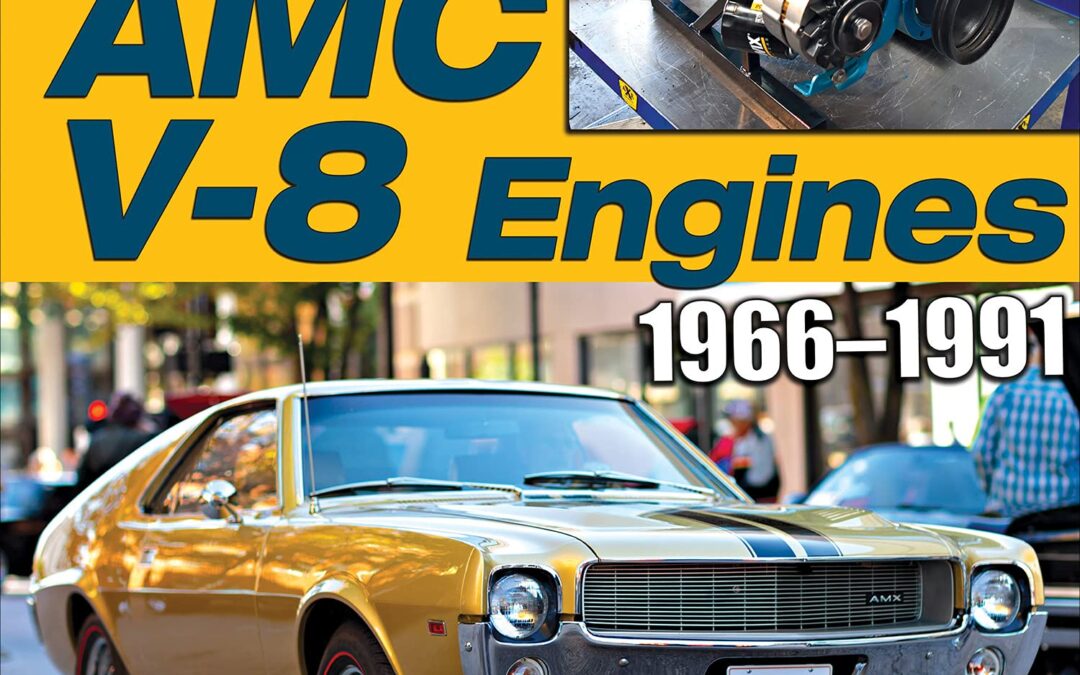
Rebuild your American Motors Corporation (AMC) V-8 engine with help and guidance from Don’s Auto Parts & Machine Shop located in Kenosha, Wisconsin, the home of American Motors!
The AMC Gen II and Gen III V-8 family consists of 290-, 304-, 343-, 360-, 390-, and 401-ci engines. Manufactured in Kenosha, Wisconsin, these engines reside between the fenders of classic cars (such as the AMC Javelin, AMX, Gremlin, AMC Rebel Machine, Matador, and Rambler and SC/Rambler) as well as Jeep CJs and full-size Jeeps.
If this is your first time rebuilding an AMC engine, this book contains detailed photos and instructions starting with disassembling your engine and determining what machining will be needed. All of the fine details about boring and honing, crankshaft grinding, balancing, cylinder head rebuilding, engine assembly, oil modifications, and performance upgrades are detailed with photos. Many of the specialized machining steps that are needed for a performance build that your local machine shop might not know about are included in this book.
AMC V-8 Engines: Rebuild & Modify not only shows the steps of a rebuild in detail but it also helps you determine what kind of build is right for your project. It will assist you in making the correct decisions on compression ratio, camshaft selection and what performance parts are needed. Many engine replacement parts are getting hard to find, so this book reveals some of the aftermarket and restoration companies that specialize in remaking AMC engine parts. Items like camshafts, forged pistons, connecting rods, and cylinder head manufacturers are covered.
Get ready to rebuild your AMC V-8. We look forward to helping you along the way!

Jack Warner was the son of an Alaskan bush plane pilot. He shot out his TV when he was ten. Uncle Kenny taught him to make Old Fashioneds in the 5th grade.Jack learned to fly at twelve, braving storms, crash landings and wild animals to save lives. After crashing on a snowy glacier, he rebuilt the broken landing gear with bailing wire and duct tape.As an Air Force fighter pilot, he witnessed U.S. pilots being shot down over North Vietnam out of reach of our rescue helicopters. After scamming general’s jeeps and golf carts to get suspension parts, he built a bush plane. He rescued a downed pilot but the second one was killed. Urged to continue by a U.S. soldier who escaped from a Vietcong prison camp, he kept going. After rescuing 21 pilots, he earned the moniker, “Black Jack” Warner. After retiring from the Air Force, he headed for the good ‘ol USA. On the way home, a high stakes poker game in Hawaii changed his life. As a new private pilot, he flew celebrities, delivered priceless jewels and one of a kind collector cars. Jack piloted a TV news airplane but ended up crashing into the station’s helicopter.Warner bought “mothballed” planes and brought them back to life to start an air cargo business. Jack’s staff of “moles” went dumpster diving to get valuable intel info on competitors. Guerilla tactics like these helped him become the largest cargo carrier in the world.Jack once volunteered to fly a water dropping airplane, saving the lives of eight firefighters. But, he was the most proud of rescuing five Americans from Iraq, right under Saddam Hussein’s nose.His career of a never ending trampoline of ups and downs kept his life anything but boring.

Lifestyle journalist Thijs Demeulemeester takes you on a trip through some iconic houses and the unique cars that match them in elegance of design and construction.
“Life is too short to drive boring cars.” – Hanan Sobati, founder of Arabian Gazelles, the first female supercar club in the world.
“I only purchase and drive cars that represent thoughtful design, elegance and performance.” – Frank Lloyd Wright
This book about beautifully designed cars and international architecture has been curated with an eye for pure aesthetics. Although architecture and cars are theoretically miles apart, the sources of inspiration for their designers are often strikingly similar. Recalling a time when you could recognize an architect from his Saab or his Citroën DS, lifestyle journalist Thijs Demeulemeester shows that architects and luxury car makers are alike in their appreciation of elegance of design, attention to materials, and solid construction. This book takes you on a trip through some iconic houses and the unique cars that match them.
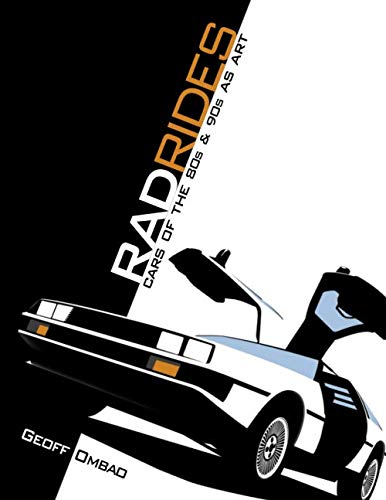
The cars of the 80’s, and 90’s are often remembered as slow, unsophisticated, or boring. But during this time many unique, beautiful, and (sometimes) awesome cars emerged as engineers, designers, and industrialists worked to bring their dreams to reality. Cars such as the iconic Delorean, the flamboyant Ferrari Testa Rossa, the game-changing Acura NSX, and more are represented in this book as bold works of art. Additionally, many work-in-progress images offer glimpses into the creative process. The illustrations in this book were created digitally using Adobe Sketch, Illustrator, and Photoshop.
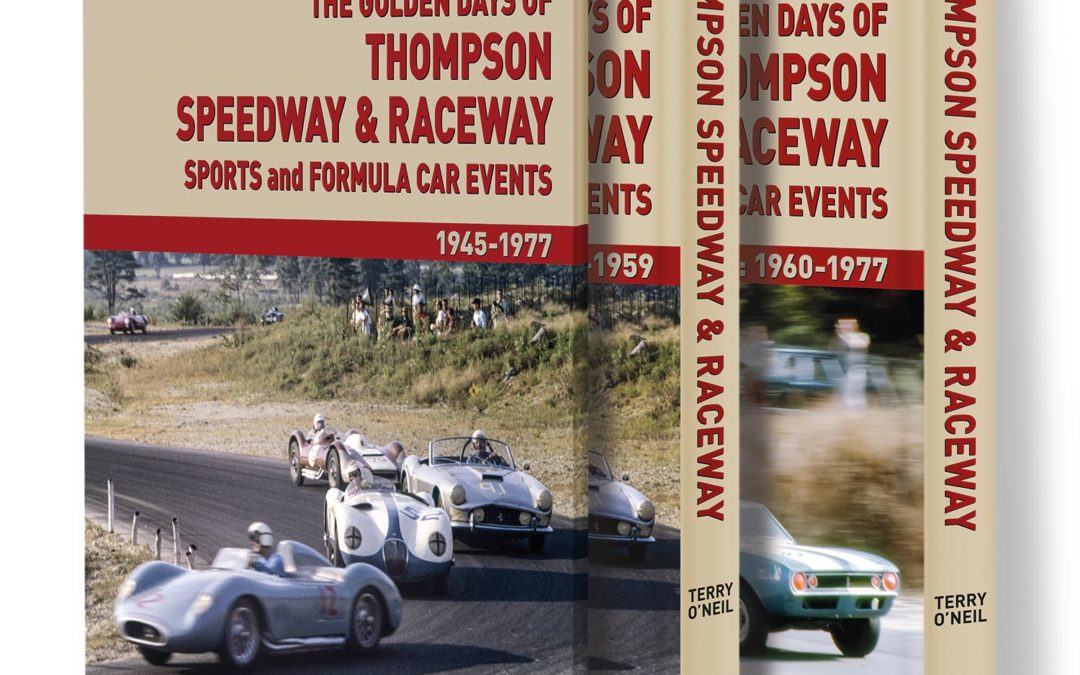
Occasionally a spark of inspiration can become the catalyst for transition. Just such an occasion took place with the construction of Thompson Speedway in 1940, a five-eighth mile banked oval track, dubbed “The Indianapolis of the East.” A road course joined to the oval in 1952 enlarged the track to form the first privately-owned complex where sports car drivers could race safely. It transformed the face of sports car racing in America, and hastened the demise of the dangerous open-road events together with the majority of flat and boring airfield race venues. This two-volume set, illustrated with many previously unseen photographs, traces the history of the raceway during its active years and describes the personalities involved in the changing fortunes of the course until its closure in 1977.
- Two-volume set with dust jacket and slipcase
- 240mm x 330mm (portrait format)
- 760 pages (VOL 1: 352 pages, VOL 2: 408 pages)
- 1200 images total
- Signed and Numbered Edition of 500 copies
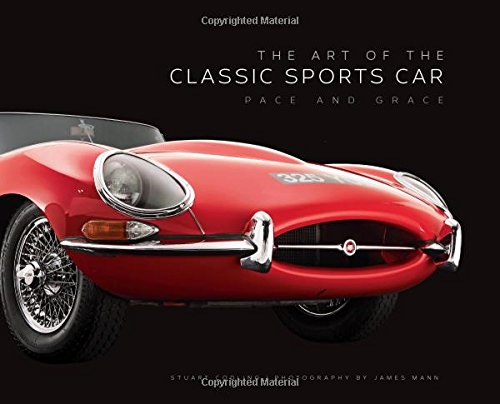
The most fun you can have on four wheels
Sports cars are the athletes of the automotive world. Always nimble and quick, often powerful, sports cars fly where other cars lumber, and dash where others plod. The definition of a sports car is somewhat fluid, and the question “What was the first sports car?” will often incite a heated debate among enthusiasts. Still, most car fans feel that they know a sports car when they see one and when asked to name a few will rattle off a remarkably similar list of name plates: Jaguar, Corvette, Triumph, MG, Aston Martin, Ferrari, Lotus, Alfa-Romeo, BMW. Pressed harder, more exotic and obscure brands will emerge: DB, Alpine, Bugatti, Lancia.
Sports cars have offered road and track excitement for nearly 100 years. The original cars evolved for racing, but their appeal and popularity ensured that production versions were soon available for those whose sporting intents never left the boulevard or winding back road.
Along the way, sports cars became more comfortable, sometimes almost practical, and above all handsome. But never have they been boring.
The Art of the Classic Sports Car offers enthusiasts a beautifully illustrated review of several decades of high-performance cars, featuring cars from around the globe all shot in the studio to ensure a handsome and desirable book. Each featured car includes a profile discussing the car’s place in sports car history along with technical and performance specs as well as a smattering of historical images and period ads.

The thinking man’s sports car: a symbol of the relentless desire for peak power and limitless performance. The Porsche 911 inspires a worldwide ripple effect.
When Ferdinand Porsche could not find a sports car he liked, he decided to build one himself. And now, the rest is history: Jerry Seinfeld drives it; Boris Johnson admires it; Steve McQueen loves it; and Jeremy Clarkson hates it. The Porsche 911 moves the world. Despised by many in Germany as a set of wheels for fat cats, it is the favorite car of free spirits and intellectuals in the U.S. and across the globe. The Porsche 911 was not just invented by one of the most fascinating and controversial families – it is also a technical meisterwerk. Since its launch in 1963, the 911 has built a reputation for itself as “the thinking man’s sports car.” Both a car and a cultural icon, it has earned a fan base that spans from young to old, East to West, connoisseur to enthusiast.
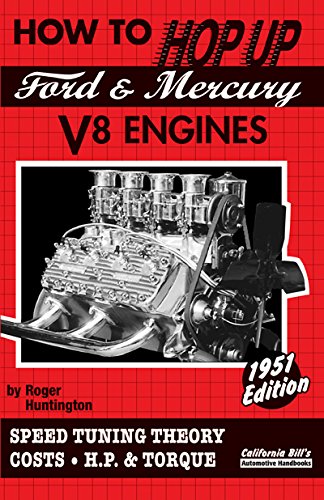
Speed Tuning Theory, Costs, H.P. & Torque
This Roger Huntington classic will help you understand how things were done around 1951, specifically, the details on planning the modifications, fitting the block, boring and stroking, flathead and overhead-valve cylinder heads, cams, pistons, rings, intake manifolds, exhaust headers and special ignitions. A special chapter discusses superchargers.
The book shows classic speed equipment developed and manufactured by Ardun, Belond Besasie, Champion, Frenzel, Harman-Collins, Hilborn, Howard, Iskenderian, Italmeccanica, Kong, Mallory, McCulloch, Navarro, Offenhauser, Roemer, Smith & Jones, Spalding, SpeedOmotive, Stephens, Tattersfield-Baron, Tornado, Vertex, Weber and Winfield. The book also explains the V-8 family tree, planning the job, block modifications and assembly, cylinder heads, carburetors, estimating horsepower and how to get the most performance for your money. A classic guide for any auto buff’s library.

Your Guide to the Components & Systems of Modern Cars, Including Hybrid & Electric Vehicles
A comprehensive guided tour under the skin of the car. Diesel, petrol (gasoline), electric, hybrid and alternative propulsions are all dissected and explained in a reader-friendly manner, and as you move from the engine to the tailpipe, you’ll discover what an exciting world there is within the car. Organized in intuitive chapters and backed with colorful illustrations and cutaways, this book describes the systems and parts that make your car move. Without emphasizing the ‘boring’ science bits, it discusses the practical application of various automotive terms, and explains why having more of one thing and less of another is beneficial in the real world. Whether you’re just curious, or wish to become a better car owner, this book will start you on an exciting journey.
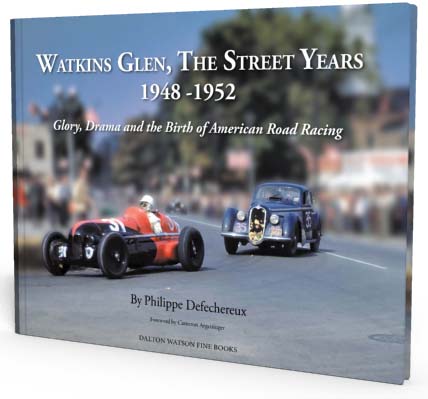
In 1948 Watkins Glen staged the first official American race for sports cars since the Vanderbilt Cup races of the early years of the century. This book is about the transformation of post-World War II racing in America and how road racing became a leading sport in the US, beginning at Watkins Glen and followed by Sebring, Daytona, Laguna Seca and other circuits.
These historic first five years are fundamental to road racing in America when the race was staged through the village streets and neighboring countryside until a permanent track was built in 1953. The races introduced famous international marques such as Ferrari, Jaguar, Porsche, Allard, Healey and Cunningham and encouraged a pantheon of great drivers to develop, among them, Briggs Cunningham, John Fitch, Phil Walters, Phil Hill, Jim Kimberly and Walt Hansgen. Later, from 1961 to 1980, Watkins Glen was the site of the Formula 1 United States Grand Prix.
Cameron Argetsinger, a lawyer and leader in upstate New York, was the man with the dream and the story of how he made it all happen against enormous odds is told in detail. It includes anecdotes and interviews contributed by many of the early participants, and has exclusive color photographs taken during years when color photography was practically unknown.
In 2011, Watkins Glen celebrates the 50th anniversary of its first Formula 1 Grand Prix. Had the early Sports Car Grand Prix of 1948-52 not taken place and quickly become a huge popular success, Watkins Glen would long ago have disappeared in the annals of history. Instead, it remains to this day a challenging race track, with two nationally televised events each year, and it is the home of the world’s first Motor Racing Research Library.
Over 300 photographs provide vivid and fascinating illustrations of the men and machines who threaded together every part of this extraordinary story. Full race results and statistics for all entrants in the 13 races run between 1948 and 1952 are also provided in detail. A final chapter shows how many of the race cars from the early years are now highly valued and are prize-winners at concours events.
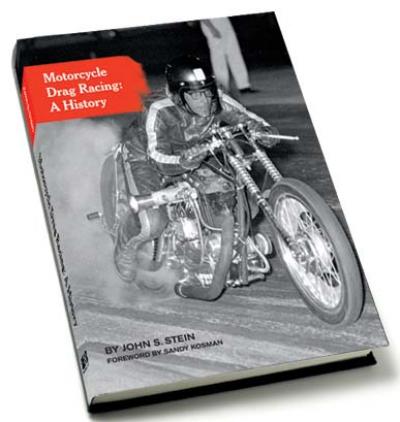
“There is a line in a Lovin’ Spoonful song that says, “”It’s like trying to tell a stranger about rock ‘n roll.”” Motorcycle drag racing is a bit like that. To those who follow it, the sport makes perfect sense. To those who don’t, it makes none at all. This book is for both.
At 244 pages and nearly 3 pounds, this book is quite large. With so much to explore, it had to be. Organized motorcycle drag racing began nearly 60 years ago, and an incredible amount has happened since then..
While much of the change has involved the machinery-and the book discusses it in great detail – it is the people that make the sport so fascinating. And in the book, more than 500 of them are discussed.
.
In the words of former Cycle editor, Cook Neilson, “Stein gives dimension and warmth to the people who built and rode these bikes, some of whom are still banging their heads against the quarter-mile reality. Clem Johnson. Sonny Routt. Boris Murray. John Gregory. Leo Payne. Byron Hines. Joe Smith. Dozens more. Geniuses all, innovators all. John Stein has done them – bikes and men – proud.”

he venerable Jeep 4.0L in-line 6 engine has powered millions of Jeeps, including CJs, Wranglers, Cherokees, and Wagoneers. The 4.0 delivers adequate horsepower from the factory, but many off-road drivers want more horsepower and torque to conquer challenging terrain, which means these engines are often built and modified. The Jeep 4.0, or 242-ci, is affordable, abundant, exceptionally durable, and many consider it one of the best 4×4 off-road engines.
In this Workbench title, veteran author and Chrysler/Jeep engine expert Larry Shepard covers the rebuild of an entire engine in exceptional detail. He also delves into popular high-performance modifications and build-ups. Step-by-step photos and captions cover each crucial step of the engine disassembly. He shows the inspection of all critical parts, including block, heads, rotating assembly, intake, and exhaust. Critical machining processes are covered, including decking the block, line boring, and overboring the block. The book provides exceptional detail during the step-by-step assembly so your engine is strong and reliable. Installing a larger-displacement rotating assembly (or stroker package) is one of the most cost-effective ways to increase performance, and the author covers a stroker package installation in detail.
With millions of Jeep 4.0 engines in the marketplace (which are subjected to extreme use), many of these engines require a rebuild. In addition, many owners want to extract more torque and horsepower from their 4.0 engines so these engine are also modified. Until now, there has not been a complete and authoritative guide that covers the engine rebuild and build-up process from beginning to end. Jeep 4.0 Engines is the essential guide for an at-home mechanic to perform a professional-caliber rebuild or a high-performance build-up.















